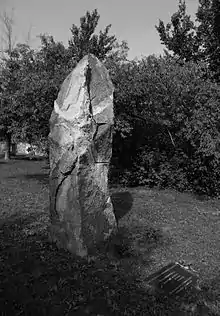Fulda witch trials
The Witch trials of Fulda in Germany in the years from 1603 to 1606 resulted in the death of about 250 people.[1] It belonged to the four largest witch trials in Germany alongside the Trier witch trials, the Würzburg witch trial, and the Bamberg witch trials. [2]

History
The witch trials were ordered by Prince-abbot Balthasar von Dernbach after he had returned to power in 1602 after being exiled for over twenty years, and presided over by Balthasar Nuss, who had attached himself to the abbot during his exile and afterwards was appointed Zentgraf of Hofbieber and Malefizmeister. Investigations began in March 1603, and shortly thereafter, the arrests begun in the city. One of the first and the most well-known victim was Merga Bien, whose case even concerned the Imperial Chamber Court.
The witchhunts ceased soon after the Prince-abbot died on 15 March 1605. Nuss was imprisoned and accused of having enriched himself. Nuss remained in custody for 13 years; after the university of Ingolstadt ruled to that effect, Nuss was beheaded in 1618.
Reception
In 2008 a memorial for the victims of the witch trials was established in Fulda.
References
Sources
- Heinrich Heppe, Die Restauration des Katholizismus in Fulda, auf dem Eichsfelde und in Würzburg. 1850
- Karl Eder, Die Kirche im Zeitalter des konfessionellen Absolutismus (1555–1648), 1949, 69. 295 f.
